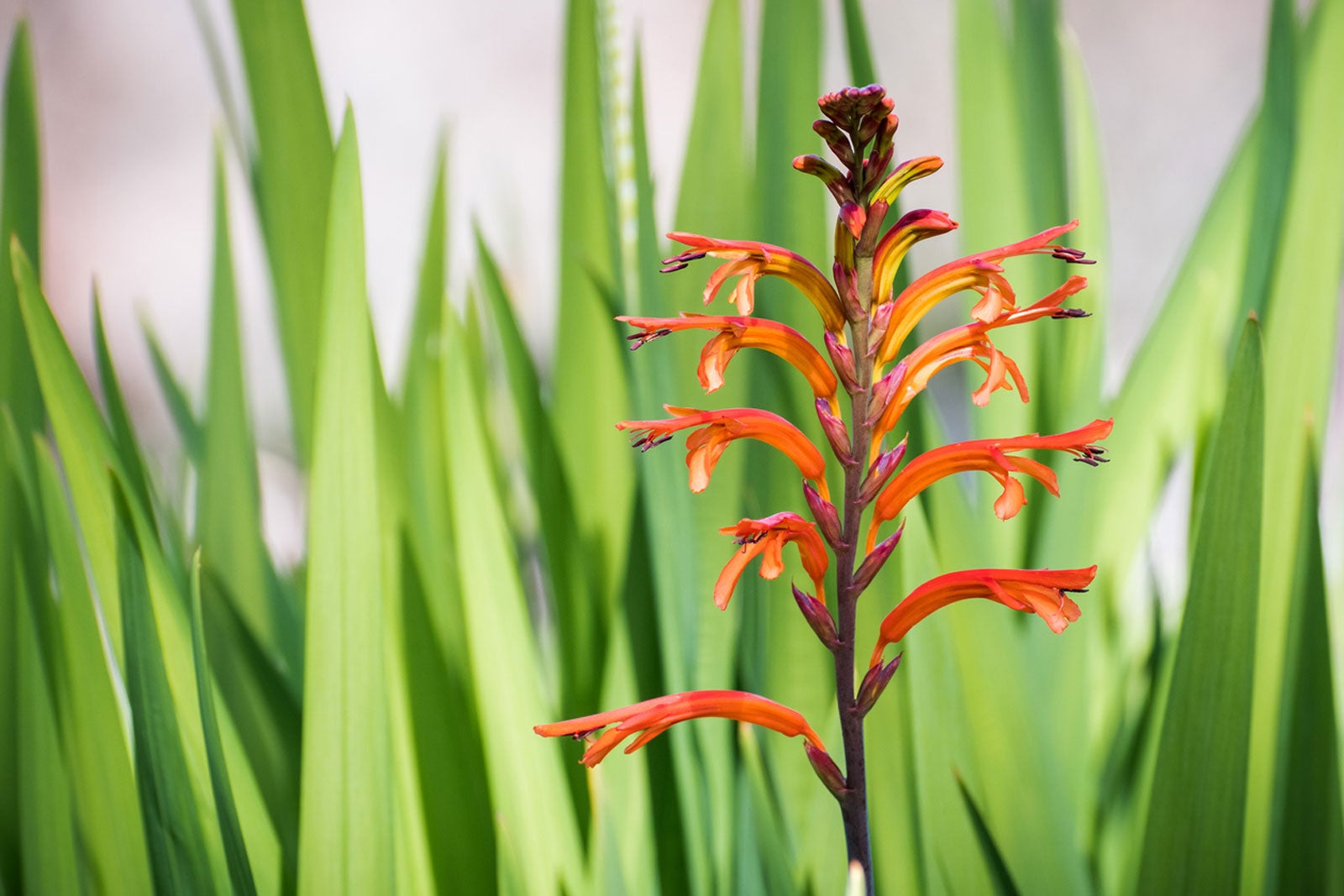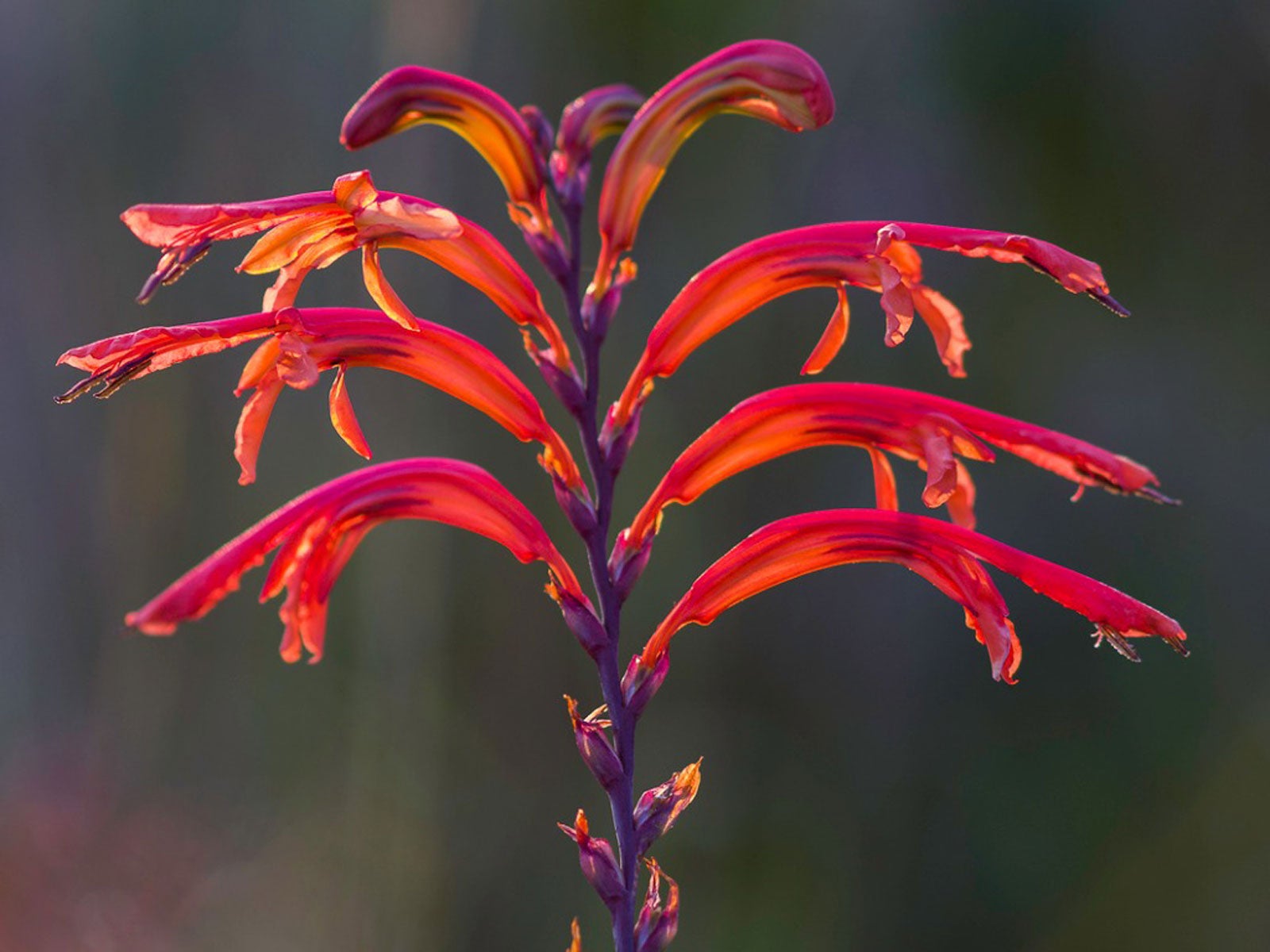Growing Chasmanthe Plants: Learn About Chasmanthe Plant Care


Chasmanthe is a fabulous plant that is related to the iris. Chasmanthe flowers stem from frost tender bulbs and appear in summer. They come in a rainbow of colors and provide vertical interest at the back of low growing perennial beds or as ushers along a path.
If you are looking for a plant that complements your water bill, look no further than Chasmanthe. This drought tolerant bulb produces eye-popping flowers in almost every hue. Keep reading for tips on how to grow Chasmanthe and what winter care might be necessary.
About Chasmanthe Flowers
Chasmanthe is native to South Africa and one of the true heat seeking plants. In the wild, the plant grows in rocky outcrops. Some species occur where there is plentiful rainfall, while others grow in more arid regions.
Gardeners growing Chasmanthe plants in warm regions may need to take heed, though, as the plants can become invasive.
The long, wide leaves grow 2 to 5 feet (61 cm. to 1.5 m.) tall. Stems emerge in late winter, followed by these big leaves. Next comes the flower stems and, finally, the tubular 3 inch (8 cm.) blooms. The flowers come in every color of the sunset and deeper reds as well.
How to Grow Chasmanthe
Growing these beauties starts with planting Chasmanthe corms in late summer to fall. Select a sunny location in well-draining soil where the plant will receive average nutrient needs. Dig trenches about 5 inches deep (13 cm.) and space the corms several inches (8 cm.) apart.
They will make a showy display if planted in wide patches. Once planted, water once a week deeply for a month. After that, the plant will need no special irrigation unless summers are particularly dry, hot, and harsh. Other astonishing ways of growing Chasmanthe plants is at the front of a hedge or dotted among perennials.
Gardening tips, videos, info and more delivered right to your inbox!
Sign up for the Gardening Know How newsletter today and receive a free copy of our e-book "How to Grow Delicious Tomatoes".
Chasmanthe Plant Care
Although it is true that after planting Chasmanthe corms there is very little care during the growing season, in some regions, the plant will need other special attention.
In areas that freeze or get a great deal of rain, lift and store the corms after the foliage has died back. Plant them out in spring after all danger of frost has passed.
In warm regions, leave the corms but divide them every seven to ten years. Cut the foliage back once it is brown and dead.
These are easy growing, lovely flowers that will return annually to brighten up your landscape.

Bonnie Grant is a professional landscaper with a Certification in Urban Gardening. She has been gardening and writing for 15 years. A former professional chef, she has a passion for edible landscaping.
-
 Moody Blooms For Spring: 8 Types Of Black Flowers To Add Drama To Spring Displays
Moody Blooms For Spring: 8 Types Of Black Flowers To Add Drama To Spring DisplaysFrom midnight burgundies to inky violets, several types of black flowers can enrich and embolden a spring display. Try these brooding bloomers for a moody garden
By Tonya Barnett
-
 Can Snake Plants Live Outside? Everything You Need To Know For Snake Plants Al Fresco
Can Snake Plants Live Outside? Everything You Need To Know For Snake Plants Al FrescoSnake plants can live outside given the right conditions, but be careful that they don't take over! Learn the best way to use snake plants in your landscape.
By Mary Ellen Ellis
